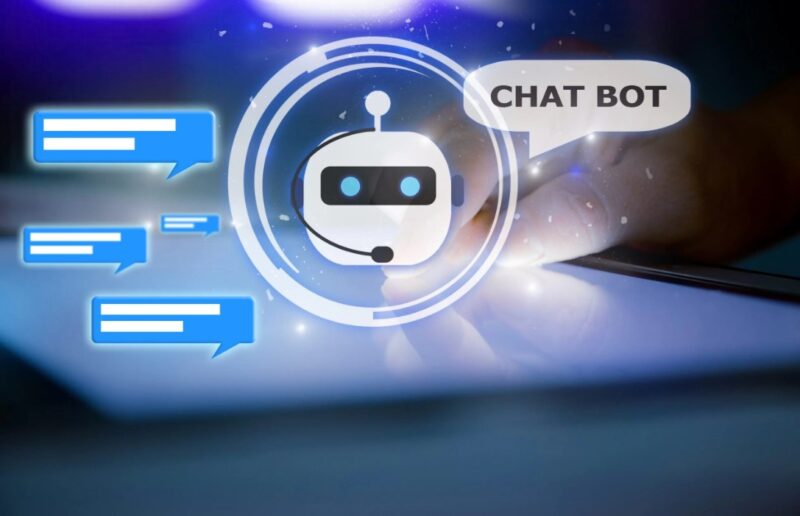As AI chatbots in gaming get more advanced, it’s getting harder to tell if you’re chatting with a real person or a bot, turning the game into a challenge of figuring out who or what you’re actually talking to.
In this post, we’ll explore how AI chatbots have evolved in gaming, the roles they play, and most importantly, how you can spot the difference between a human player and an AI-driven character.
1. Weird Word Choices
One of the first clues that you might be interacting with an AI chatbot is the use of odd or uncommon word choices. While human players often use slang, abbreviations, or informal language in their chats, AI chatbots like ZeroGPT might drop in words like “delve into” or “groundbreaking.” These terms can feel a bit out of place, especially in a gaming context where communication is usually more relaxed and colloquial.
Imagine you’re discussing a new game update with another player, and they respond with, “Let’s delve into the implications of this groundbreaking patch.” While this might sound perfectly normal in a formal setting, it’s a bit too polished for a casual in-game conversation.
Bots are often programmed with a rich vocabulary to seem knowledgeable, but this can sometimes backfire by making their responses seem overly formal or stiff.
2. Repetition
Repetition is another key sign that you’re dealing with a bot. AI chatbots can struggle with natural language processing, which sometimes leads them to repeat phrases or questions.
For instance, if you ask a question and receive a response that seems oddly familiar – or if you notice that the chatbot keeps steering the conversation back to a specific topic or recommendation – it’s a red flag.
This repetition can also manifest in how the chatbot handles your responses. If it frequently repeats your questions back to you before answering or gives nearly identical answers to similar questions, it’s likely trying to follow a scripted interaction flow, which is a hallmark of bot behavior.

3. Vague Answers
While AI chatbots have come a long way in terms of their conversational abilities, they can still struggle with providing detailed or nuanced answers. If you notice that the responses you’re getting lack substance, especially on more complex or serious topics, you might be dealing with a bot.
For example, if you ask a chatbot about the best strategy for a difficult level in a game, and it replies with something generic like, “Just do your best and have fun!”—you might want to dig deeper.
Humans, especially experienced gamers, tend to offer specific advice or share personal experiences. A chatbot, on the other hand, might give vague or overly positive responses because it’s not equipped to provide detailed insights.
4. Response Speed
One of the more obvious signs of a chatbot is the speed at which it responds. While human players might take a moment to type out a thoughtful reply, AI chatbots can generate responses almost instantaneously.
If the “player” you’re chatting with is consistently replying within a second or two, it’s worth considering that you might be interacting with a bot.
That said, it’s important to remember that some human players are also incredibly fast typists, so this sign alone isn’t definitive. However, when combined with other indicators, lightning-fast responses can be a strong clue.
5. They’re Always Available
AI chatbots are always on. No matter what time of day or night you’re playing, they’re available to chat. While there are certainly human players who spend long hours gaming, everyone needs a break eventually. If your gaming buddy is always online, never seems to sleep, and is always ready to engage in conversation, you might be chatting with a bot.
This constant availability is one of the key advantages of AI chatbots, they can provide 24/7 assistance or companionship in games. But for those looking to connect with real people, it’s also a giveaway that the other “player” might not be human.

6. Overenthusiasm
While it’s great to be positive and friendly, AI chatbots can sometimes take this to an extreme. They might respond to every message with an abundance of exclamation marks or express excitement about even the most mundane topics. Let’s be honest here, no one is that positive all the time.
For instance, if you mention that you’re logging off for the night, and the response is something like, “Wow, that sounds like a great idea!!! I hope you have the BEST sleep ever!!! Can’t wait to chat again soon!!!”, it’s possible that you’re dealing with a bot.
Humans typically modulate their enthusiasm based on the context, whereas a bot might consistently present a level of enthusiasm that feels a bit artificial.
7. Perfect Grammar
While humans are prone to the occasional typo or grammatical error, AI chatbots are typically programmed with perfect grammar. This can be a double-edged sword—on the one hand, it makes the bot’s responses clear and easy to understand, but on the other hand, it can also make them seem less human.
If the “player” you’re chatting with never makes a spelling mistake, uses flawless punctuation, and always constructs sentences perfectly, it could be a sign that they’re not human. However, it’s worth noting that some bots might “hallucinate” or fabricate facts, which can lead to responses that, while grammatically correct, are factually inaccurate or nonsensical.
To Identify The Bot, Try The “Crazy Ivan” Test!
The “Crazy Ivan” test involves introducing an unexpected change into the conversation. This could be something as simple as switching languages mid-chat or asking a completely unrelated question.
For example, if you’re chatting in English, you might suddenly switch to Spanish and see how the other person responds. A human player might stumble a bit, ask for clarification, or switch to using a translation tool. A bot, on the other hand, might either continue in English, provide a nonsensical response, or switch to Spanish without any acknowledgment of the change.
The key here is to observe how the “person” reacts to the sudden shift. Bots are typically programmed to handle specific scenarios and might struggle when confronted with something outside of their expected parameters.

How AI Chatbots Work
To truly understand how AI chatbots operate, it’s helpful to get a grasp on the technology that powers them. Don’t worry, this isn’t as technical as it sounds.
Natural Language Processing (NLP)
At the core of every chatbot is something called Natural Language Processing, or NLP for short. This is the tech that helps bots understand and talk like humans. It’s what allows an AI character to get what you’re asking and give a proper response.
NLP involves a few key steps, like breaking sentences down into individual words (that’s called tokenization), figuring out what you actually want (intent recognition), and picking out important details (entity recognition).
Machine Learning and Deep Learning
Machine learning is kind of like teaching a chatbot by example. The AI gets trained on tons of data—conversations, texts, you name it—to spot patterns and reply in ways that sound like a real person.
Then there’s deep learning, which takes it a notch higher. It uses neural networks, which help the AI process info more like a human brain. This is what gives advanced chatbots the ability to come up with responses that not only make sense but sometimes even surprise you with how clever they are.
Scripts vs. Dynamic AI
Some AI chatbots in games stick to scripts—they only say and do what they’ve been programmed to. You can usually tell when you’re talking to one of these because their replies might start to feel a bit repetitive or stiff.
On the flip side, dynamic AI chatbots can generate responses on the fly, adjusting to all sorts of inputs and situations. These are the bots that might make you wonder if there’s actually a human on the other end.

What Do AI Chatbots Actually Do in Games?
AI chatbots in games can take on various roles to enhance your gaming experience:
- NPCs (Non-Player Characters) ─ These are the core of many games, offering quests, backstories, and interactions that make the game world feel alive.
- Companions ─ In games like “Skyrim” or “Mass Effect,” these AI characters fight alongside you, give helpful advice, or just keep you company during those long adventures.
- Opponents ─ In strategy and combat games, AI bots step in as your rivals, pushing you to sharpen your skills and rethink your strategies.
- In-game assistants ─ Some games include AI chatbots that provide hints, tips, or support, ensuring you never feel completely lost or stuck.
- Storytellers ─ In narrative-driven games like “AI Dungeon”, AI chatbots play a key role, creating dialogue, plots, and scenarios that change based on your decisions.
Does It Really Matter If It’s a Bot?
So, you’ve learned how to spot a bot in your favorite games, but here’s the big question: Does it really matter? As AI chatbots get smarter, they’re actually making our gaming experiences better than we ever thought possible. In the end, what really counts is the story, the strategy, and the fun we’re having along the way.







